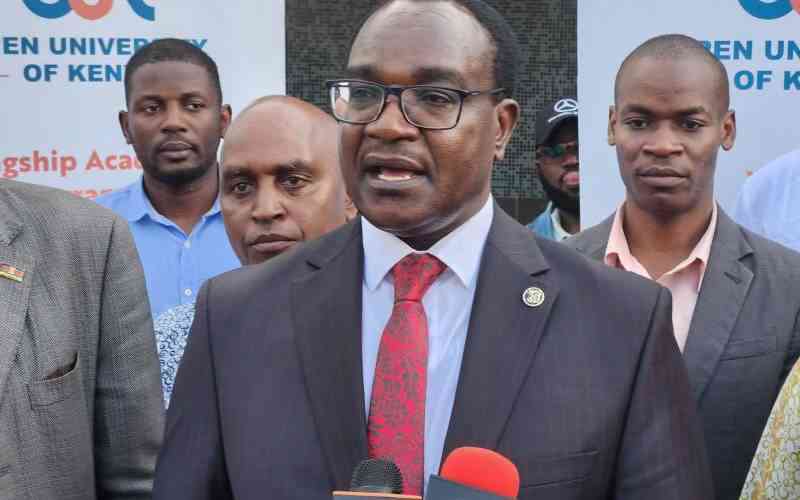
President William Ruto has, for the fourth time, re-engineered the university funding model adopted in 2023, after three previous attempts aimed at fixing the financing of higher education that have resulted in uproar.
Earlier this week, the government unveiled a reduced fees structure in response to public outcry over the high cost of university education.
The Saturday Standard has established that the government has scrapped the six bands that were initially used as markers of a student’s financial need.
Instead of the bands that defined a student’s level of need, each learner will now be categorised on a new scale ranging from one to 100, with 100 representing the most needy and one representing those most able to afford their fees.
This means that under the new system, there will be 100 points gauging a student’s financial status.
“If a student is assessed at 80 points and another at 79, the difference in funding between them will be minimal, but under the former banding system, they would be placed in two different bands with a significant disparity in the funding they receive,” a source familiar with the changes told The Saturday Standard.
The decision comes alongside a reduction in university fees.
The fees reduction — set to start in September — will see the lowest direct payment by a student’s family amount to Sh11,628. On the other hand, the highest fee charged to a student will be Sh450,000.
The most expensive course, currently Medicine, initially cost Sh612,000 even after a mandatory 15 per cent discount, but has now been reduced to Sh450,000.
Higher Education PS Beatrice Inyangala, on Wednesday, released a circular directing universities to implement the new fees directive, without mentioning the debts owed to the institutions.
“Public universities are hereby directed to adopt the new fees schedule, effective 1 September, for both first-year and continuing students. All public universities are further directed to update their admissions and finance portals to reflect the revised fees for academic programmes,” the circular reads.
The successive revisions to the funding models have not only confused students and parents but have also sparked court cases and undermined trust in the education system.
Indeed, President Ruto has yet to fulfil any of the promises he made to fund universities during his 2022 election campaign.
In his manifesto, and later during the early part of his term, the President had pledged to review higher education funding.
Stay informed. Subscribe to our newsletter
Ruto’s original promise included free tuition for the most vulnerable students and interest-free HELB loans.
Instead, the President has presided over a two-and-a-half-year policy rollercoaster that has seen the university funding model undergo three reviews, leading to confusion over fees and failure to disburse the promised monies to universities.
Initially, students were divided into three categories: vulnerable, less vulnerable, and able.
The three categories were proposed by a team appointed by the President, later known as the Presidential Working Party on Education Reforms.
Under that plan, vulnerable students were to study for free with no financial obligations, as the government would provide 100 per cent funding.
However, the proposal was revised before implementation to include four categories.
These four tiers were designed to offer scholarships ranging from 82 per cent for the most vulnerable to 70 per cent for the extremely needy, along with loans.
Then came the five-band model, which also offered varied combinations of scholarships and loans.
Critics now argue that the new one-to-100 scale is just the latest attempt to refine a broken promise.
“No amount of tweaking will fix a fundamentally flawed approach that lacks transparency, consistency, or adequate funding. What Ruto billed as a revolutionary reset for higher education is increasingly being seen as a game of shifting goalposts,” said a vice-chancellor, who spoke to The Saturday Standard yesterday.
On Thursday, it emerged that the government has yet to remit Sh17 billion in student tuition fees owed from last year. This now adds to the Sh85 billion already owed to universities.
With no fresh funding allocation to offset lower tuition revenues, universities are staring at deepening deficits, stalled projects, unpaid salaries, and a potential breakdown in academic operations, sources within top institutions warn.






